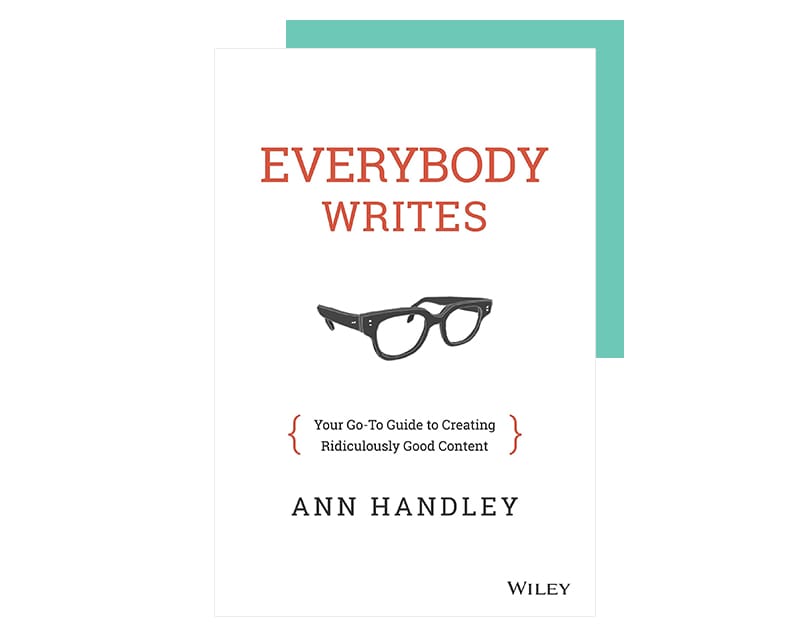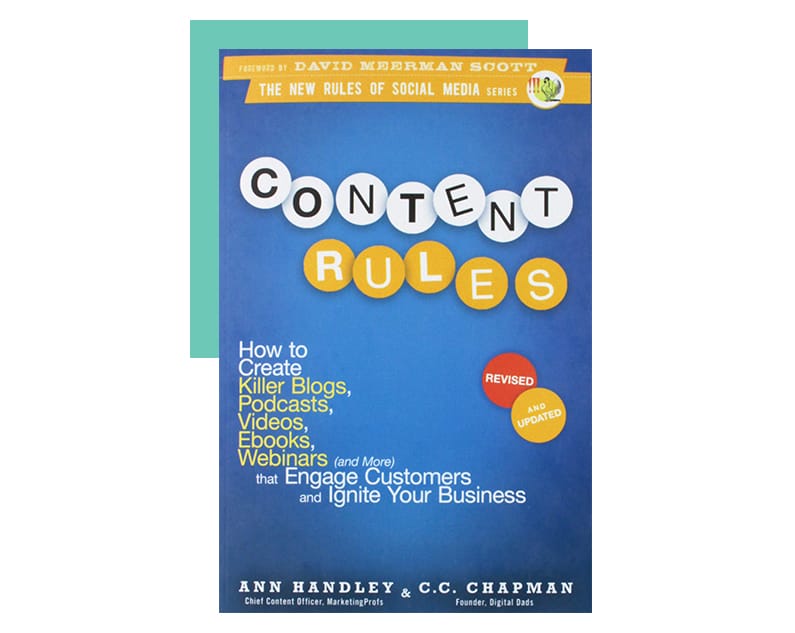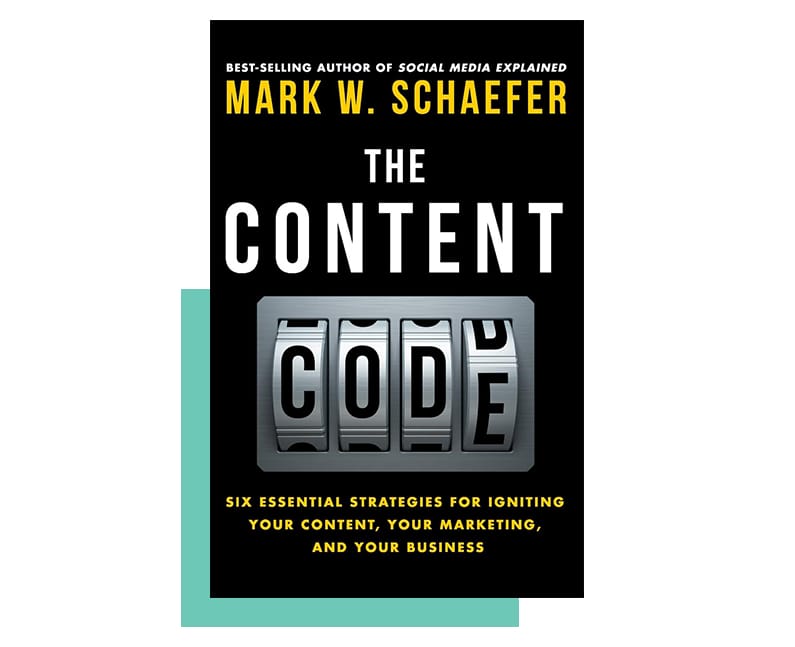Knowing why your audience should care about your content is essential to adding value to it.
What does it mean to have value? In marketing, we talk about and read articles centered on creating value, but what does that mean, exactly? To answer that question thoughtfully, it’s necessary to define the term.
The marketer’s definition of value goes far beyond the normal interpretation of the word. In the words of Investopedia:
“perceived value is the customers’ evaluation of the merits of a product or service, and its ability to meet their needs and expectations, especially in comparison with its peers.”
And there’s the key: “perception.” Your good or service needs to be perceived to fulfill prospects’ and customers’ needs.
But how do you create that perception?
Chief Content Officer at MarketingProfs, Ann Handley, offers some help here in her book, Everybody Writes: Your Go-To Guide For Creating Ridiculously Good Content. In particular, she implies that you can craft valuable content by putting yourself in the reader’s shoes and read your copy as someone who’s never seen it before might.
This includes raising and answering potential objections before they arise. You want to please the prospect or customer and that’s it:
“Relentlessly, unremittingly, obstinately focus on the reader.
So write your first draft as you normally would—then go back and rework it, swapping places with your readers to consider things from their point of view… Ask yourself:
- What experience is this creating for the reader?
- What questions might they have?
- Am I making them work too hard to figure out what I’m trying to say?”
So if those are the questions you should be asking yourself to create valuable content, what is the type of value should you be adding? After all, value varies from person to person.
Valuable Content Helps You Do Your Job Better
For our purposes, valuable content is content that helps you do your job better. This creates a cascading effect–we help you; you help your customers. And to do that, Ann Handley comes in to save the day again, but only this time in her book, Content Rules: How to Create Killer Blogs, Podcasts, Videos, Ebooks, Webinars (and More) That Engage Customers and Ignite Your Business. In it, she defines what good content is and what it should do.
It shouldn’t try to sell. You can let the value of the content do that. In what is the sixth content rule, Handley mentions content should:
“Share or solve; don’t sell. Good content doesn’t try to sell. Rather, it creates value by positioning you as a reliable and valuable source of vendor-agnostic information. Your content shares a resource, solves a problem, helps customers do their jobs better, improves their lives… In other words, it’s high value to your customers in whatever way resonates best with them.”
A real-life example that personifies this passage is Charmin. The personal hygiene company developed an app called SitorSquat: Restroom Finder. The app features an easy-to-use interface that resembles a GPS that lists all of the public bathrooms in your area that are listed in their database.
How can MESH help you?
Founded by an experienced life sciences marketing industry veteran, we help you accelerate growth at every stage, from innovation to exit.
Schedule your FREE 20-min Zoom call today!
“Clean” bathrooms–that is, ones that are desirable–are marked with a green toilet paper roll labeled a “Sit.” Bathrooms that are less than satisfactory are signified by a red toilet paper roll. Those are called “Squats.”
This is a great way to solve the customer’s problem–they may need a bathroom, and they may need it now. The last thing someone needs is to download an app that locates bathrooms only to have the app developer try to sell you something in a 30-second video ad in a time of desperate need.
And true to form, the app does not contain unavoidable, pop-up ads.
But Charmin is a B2C example. Something more closely related to B2B would look like Prezi. It’s a “presentation software that uses motion, zoom, and spatial relationships to bring your ideas to life and make you a great presenter.”
In particular, the software enables you to appear alongside the content you’re presenting. For instance, if you need to show someone what to do on-screen, but don’t want to alternate between screens, Prezi enables you to maintain that eye contact while presenting. There are uses for it in design as well as video.
Prezi is free. It does not try to force you to purchase a membership plan with extra features, although you may if you wish. The main takeaway here is that if you want to create value, skirt the advertisements, even the ones that appear at the bottom of the screen, or in some other discreet fashion. Do have a pricing page, and do have a place where users can upgrade.
But there are many ways to go about creating content as the next section explains…
User-Generated Content Creates Value
And all of your content doesn’t necessarily have to be created by you. What I mean here is that you can let your audience help you to help others do their job better—User-Generated Content (UGC).
Take the wildly popular “Share a Coke” campaign of 2011. At this time, social media for brands was still a fairly new concept. So to help disseminate the idea faster, Coke got some help from the star power of American actress and singer, Selena Gomez, who posted the “most liked” Instagram photo at that time.
You can learn a thing or two from Coke’s tactics here in UCG. They:
- “Piggybacked” off of Gomez’s popularity to help make a photo of the campaign in action a hit on an entire channel
- The purpose of their UCG in the campaign wasn’t based on profit; it was to make people happy
You can only get customers to that happy place, though, if they care about your content–if it’s valuable to them. So how do you get prospects and customers to care about your content?
There are ways to get your audience to care about your brand other than by hoping they’ll share your content based on the value you provided with it. A couple of those methods rely on building superfans and leveraging the psychology of the diehard brand advocate.
Mark W. Shaefer speaks to cultivating these kinds of people in his book, The Content Code: Six Essential Strategies to Ignite Your Content, Your Marketing, and Your Business. He says “Google research shows that these most loyal members of your audience are more than 250 percent more likely to transmit your content!”
And he uses a sports analogy to explain how to get them. Essentially, you want to find people who’ve been to at least one game (had one exposure to your advertising). Then, you want to ramp up the chances they’ll be exposed. It only works if you give them an ideal to strive for—hope—in your exposures.
Music is one great example of an Alpha Audience at play. Consider the 80s thrash band, Slayer. These musicians have some devoted fans. According to one of them, the 43-year-old in 2016 bought his first Slayer album in 1988. He’s:
“seen Slayer maybe ten or eleven times, but seeing them in Hammersmith in ’88, on the World Sacrifice Tour with Nuclear Assault supporting, where the lighting made it look like a kind of satanic church, and they all just stood there in a row – it was so simple, dark and ferocious, more recent shows look like Las Vegas.”
This fan’s response pays attention to the fine details–details that separate his level of fandom from a generalized audience.
More or less, though, diehards like this are motivated by a set of psychological principles. Master of persuasion and influence, Robert B. Cialdini, wrote about such psychological principles in his book, Influence: The Psychology of Persuasion.
The book details a series of six psychological principles to get people to do as they wish. Among those concepts is the Principle of Consistency. Under that idea, when making a choice, people tend to stick with one they’ve already made. This way, their brains don’t have to use as much processing power because the choice has been made before.
Hair stylists are a great example of this. Consider your favorite salon. Now, a salon has more than one stylist working in it, and all are just about as qualified to do a good job handling your hair, give or take years of experience.
But you likely choose the one you’re accustomed to. Because they know how to handle your hair “just right.” You could let someone else do it, but you don’t. Why? Your brain is saving itself from having to choose. It chooses the “safe” option–the “tried and true” option.
That’s the Principle of Consistency, plain and simple.
You can take advantage of this idea by sticking to your content calendar.
That way, when you ask for something from your reader, it’ll have a greater chance of success because you already provided them with so much value. They’ve chosen you once so they’re likely to choose you again.
Here, we come full circle. You’ve added value to your content by focusing on prospects’ and customers’ problems and being a helpful resource, as well as getting them to care about your content by letting them create it for you.
Whether it’s consistently providing meaningful content or growing superfans through UGC, it’s important to know how to add value to your content.
Do you have any unique ways of adding value to your content? Let us know in the chat below.








